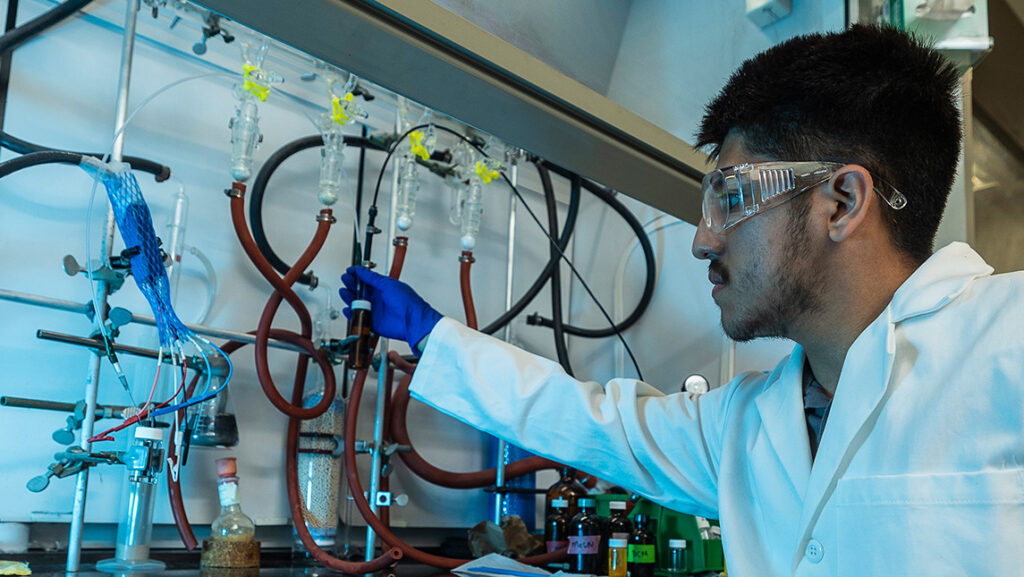Dr. Nicholas Oberlies (Chemistry and Biochemistry) was recently awarded a grant for a new project: “Deciphering the phenotypic and genomic traits that underlie the evolution of pathogenicity differences among Aspergillus fumigatus and its close relatives.” The project, a collaboration with researchers at Vanderbilt University, is supported by $750,000 in federal funding from the NIH’s National Institute of Allergy and Infectious Diseases (NIAID).
Oberlies, the Patricia A. Sullivan Distinguished Professor of Chemistry, leads a team of researchers who isolate and study bioactive compounds from natural sources, including fungi and plants. This work has implications in the realm of drug discovery and in the area of herbal drugs.
Proposal Abstract:
Fungi are major contributors to human morbidity and mortality, but we still know little about the molecular mechanisms they use to infect humans and cause disease. Aspergillus fumigatus is widely recognized as a major fungal pathogen that is estimated to cause >200,000 life-threatening infections per year and exhibit mortality rates of 30-95%. Additionally, increasingly detailed molecular examination of A. fumigatus clinical isolates have revealed that up to 15% are in reality “cryptic species,” organisms which are morphologically indistinguishable from A. fumigatus but are genetically different and comprise distinct species (e.g., A. lentulus and A. udagawae). Surprisingly, other close relatives of A. fumigatus are either not known to be pathogenic in humans or very rarely cause serious disease (e.g., A. fischeri). This striking difference in pathogenicity cannot be explained by differences in species’ ecologies, as some of these non-pathogenic species are known to be as prevalent as pathogenic ones in diverse environments, including hospitals. We hypothesize that detailed phenotypic, genomic, and functional comparisons between pathogenic and non-pathogenic Aspergillus species will identify new virulence factors and crucial adaptations associated with human disease.





